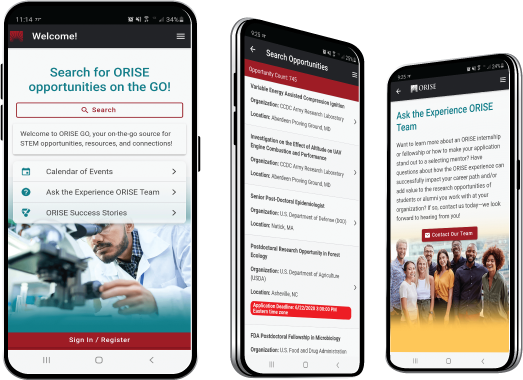Consortium of Hybrid Resilient Energy Systems Professional Internship Program (PIP) 2024
The Consortium of Hybrid Resilient Energy Systems (CHRES)
The Consortium of Hybrid Resilient Energy Systems (CHRES) program provides summer internship opportunities to undergraduate students, graduate students, recent graduates, and faculty affiliated with the four Consortium member universities: Universidad Ana G. Méndez, Recinto de Gurabo; Universidad de Puerto Rico - Mayagüez; University of New Mexico - Albuquerque; and University of Texas at El Paso. The CHRES program directly supports the U.S. Department of Energy's (DOE's) goal of building a sustainable professional and academic pipeline of the next generation of engineers and scientists, ready to take on the challenges of current and future energy systems.
A complete application consists of:
- Profile information
- Educational details
- Relevant experience
- Awards and honors
- Goals, experience, and relevant skills
- Transcripts – Click here for detailed information about acceptable transcripts
- A current resume/CV, including academic history, employment history, relevant experiences, and publication list
- Two educational or professional recommendations
All documents must be in English or include an official English translation. All information and documents must be submitted via Zintellect to be considered for an appointment at the National Energy Technology Laboratory (NETL).
If you have any questions, contact NETLinfo@orau.org.
Program Objectives
The program's objectives are to:
- Provide research and educational experiences to minority students by continuing and improving the consortium programs.
- Increase interaction between partners and between partners and national laboratories.
- Encourage minority students to excel in science, technology, engineering and math by providing them with practical experience and training through project capacity building and learning experience.
- Enlarge scientific, technical knowledge and resource base in the topics of resilient energy (engineering).
Program Details
- Ten week research experience
- Full-time participation (40 hours/week)
- Appointments will start on Monday, June 3, 2024 and end on Friday, August 9, 2024
- Participants receive a biweekly stipend based on their educational level. Stipend payments are taxable as an educational benefit. Stipends start at $436/week - $600/week for undergraduate students, or $670/week to $1,020/week for graduate students.
- On-site participants at NETL's facility may be eligible for inbound/outbound travel support of up to $1,000 and a housing allowance of $100/week
- Off-site participants may receive up to $1,000 for technology support near the beginning of their appointment
- All CHRES participants are required to present their research project activities and outcomes at the end of the program. This will include a 10-15 minute oral presentation at the CHRES Technical Forum and a 1-2 page extended abstract (research summary).
NETL's Hybrid Performance (HYPER) Facility
NETL's HYPER team is seeking researchers for projects in several areas.
1. Fuel Processing and Fuel Flexibility
One particular research interest is to explore the capability of this SOFC-GT hybrid technology under a fuel flexible environment. A one-dimension reformer was built and implemented with the SOFC model in the dSPACE platform. This project will engage in a fuel flexibility modeling study to determine the impact of an array of secondary fuels on SOFC-GT cycle efficiency, and to identify key performance and cost drivers.
2. Developing Cyber-Physical Carbon Capture Systems
This project is to develop a fuel processing and carbon capture system using the Cyber-Physical approach. Tasks include numerical simulations, system analysis, engineering design, and control assessment.
3. System Analysis
A novel cycle, composed of a solid oxide electrolyzer cell (SOEC), a solid oxide fuel cell (SOFC), an internal combustion engine (ICE), thermal management, and carbon capture technologies is proposed. This cycle aims to investigate the efficient and cost-effective production of hydrogen and electricity. System studies will be performed for cycle optimization to improve lifespan, efficiency, costs, and operability.
4. Integration of Energy Storage into Hybrid Power Cycles
The aim of this project is to evaluate the potential for energy storage in hybrid power cycles to enable more effective load following. This will build upon the analysis conducted previously that included both renewables and SOFC-GT hybrids. Energy storage concepts will be simulated and virtually integrated into hybrid cycles. They will be tested for their ability to provide flexibility and resiliency in power systems which have a high proportion of variable renewable power sources, such as wind and solar.
5. Developing Cyber-Physical Reformer
NETL researchers have pioneered the cyber physical approach to enable rapid evaluation of a variety of operational configurations while maintaining the accuracy of process dynamics. A cyber-physical reformer incorporates real-time models, experimental hardware, and dynamic data transfer and control. Tests will be planned, conducted, and analyzed to verify dynamic models and evaluate the process limitations of extracting the heat from either auto-thermal reforming, heat exchange in turbine exhaust, or from the SOFC itself.
6. Automated Startup and Shutdown of SOFC-GT Hybrid System
One inherent complexity of the SOFC-GT hybrid system comes from wide discrepancies in the individual component response times, affecting the startup and shutdown of the hybrid system critical dynamic operations. For turbomachinery, this will involve avoiding compressor surge and stall. For the FC system, it will require the thermal management and electrochemical light-off. This project will analyze previous system identification data and develop and demonstrate an automated dynamic control within the constraints of the supervisory control.
7. Load Following and Supervisory Control
The penetration of renewables requires other power plants to have a rapid load following. This project will investigate the SOFC-GT’s load following ability by operating the HYPER facility in response to the grid simulator demand. A supervisory control scheme for load will be developed. The objective is to divide/shift power generation between the fuel cell and the turbine, i.e. responding faster with the gas turbine and then adjusting the fuel cell load over time, while avoiding excessive temperature oscillation in the fuel cell. Temperature variation represents a constraint in the control problem.
8. Development of Integrated Energy System Model for System Cycle Analysis
In this project, an integrated energy system model based on a novel cycle will be developed for system studies to explore design cases for improved operability and efficiency. The system may include a solid oxide electrolyzer cell (SOEC), a solid oxide fuel cell (SOFC), thermal management, and carbon capture components. Part of the model will be developed in Matlab Simulink and the balance of the plant model will be built in Ebsilon. These two models will be coupled eventually to allow full loop iterations for the system analysis.
9. Energy and Mass Flow Analyses of an Integrated Energy System for Carbon-Neutral E-Methanol Production
Carbon-neutral electro-methanol (e-methanol) can be produced using green H2 from steam electrolysis powered by renewables and recycled CO2 from direct air capture (DAC). It has great environmental benefits, thus can potentially displace the current fossil-based emission-intensive methanol production technologies. E-methanol has broad applications such as a precursor to commodity chemicals, an energy carrier for long-term renewable energy storage, and an e-fuel in the transportation sector. However, the multi-step e-methanol production process requires an integrated energy system (IES) approach in which the energy and mass flow should be analyzed for thermodynamic analysis and estimate system efficiencies. This project aims to develop a platform for energy and mass flow analyses of this integrated energy system, likely using a spreadsheet and/or MTALAB. Participants will learn the concept of integrated energy systems, system analysis, and cyber-physical simulation. This project can help improve the interoperability and flexibility of integrated energy systems for e-methanol production for industrial decarbonization, facilitating the transformation to a sustainable energy future.
10. Using Microwave Irradiation to Promote Oxygen Production from Perovskite Oxide Materials
In addition to its role in medical and biological settings, pure oxygen gas streams also have a wide variety of industrial uses, including the clean combustion of carbonaceous fuels. By utilizing a pure oxygen stream, as opposed to air, many common impurities can be avoided in the combustion atmosphere, leading to clean CO2 production, making CO2 capture easier. Industrially, pure oxygen is commonly produced through cryogenic separations, which is cost-prohibitive at the small and/or modular scale. At NETL, we have investigated perovskite oxygen carrier materials that can reversibly extract oxygen from air and release it in various gaseous atmospheres at elevated temperatures (300-800°C). While the energetic penalties of traditional heating can be mitigated through utilization of waste heat from other reactors or machines, microwave heating has the potential for even lower energy requirements due to targeted heating. In the proposed work, a perovskite oxide will act as a microwave absorber to enable its thermal oxygen storage properties.
11. Fundamental Study of Role of Microwave Irradiation for Catalytic Reactions Using Carbon Dioxide as a Probe Molecule
As the global demand for the reduction of greenhouse gas emissions, the need to capture and utilize carbon dioxide in new and innovative ways is rapidly increasing. This project will explore the catalytic utilization of carbon dioxide to produce value-added chemicals using microwave technology. We will identify suitable catalysts systems and test different reaction parameters using advanced microwave reactors systems, while also investigating what’s happening on the surface of the catalyst using novel in situ microwave FT-IR. This will result in a fundamental understanding of microwave technology’s role in assisting in catalytic performance and utilization of carbon dioxide.
To learn more about NETL's HYPER team, click here.
Prior research or technical experience is not required to apply or participate in this program.
The ideal candidate would have a strong background in some, but not all, of these elements: MATLAB-Simulink programming, thermodynamics, middleware interface, and dynamic controls.
- Citizenship: U.S. Citizen Only
- Degree: Currently pursuing an Associate's Degree, Bachelor's Degree, Master's Degree, or Doctoral Degree.
- Minimum Overall GPA: 2.50
-
Discipline(s):
- Chemistry and Materials Sciences (12 )
- Communications and Graphics Design (2 )
- Computer, Information, and Data Sciences (17 )
- Earth and Geosciences (21 )
- Engineering (27 )
- Environmental and Marine Sciences (14 )
- Life Health and Medical Sciences (51 )
- Mathematics and Statistics (11 )
- Physics (16 )
- Science & Engineering-related (2 )
- Social and Behavioral Sciences (29 )
- Age: Must be 18 years of age
I certify that:
- To the best of my knowledge all information contained in this application is accurate
- I am a current undergraduate student or current graduate student at one of the following universities:
- Universidad Ana G. Méndez, Recinto de Gurabo
- Universidad de Puerto Rico - Mayagüez
- University of New Mexico - Albuquerque
- University of Texas at El Paso
Current faculty members are invited to apply to the CHRES Faculty Research Program opportunity.
- I understand that any falsification will render me ineligible for participation and, if found after participation has begun, may require me to reimburse any funds received

 ORISE GO
ORISE GO

The ORISE GO mobile app helps you stay engaged, connected and informed during your ORISE experience – from application, to offer, through your appointment and even as an ORISE alum!





